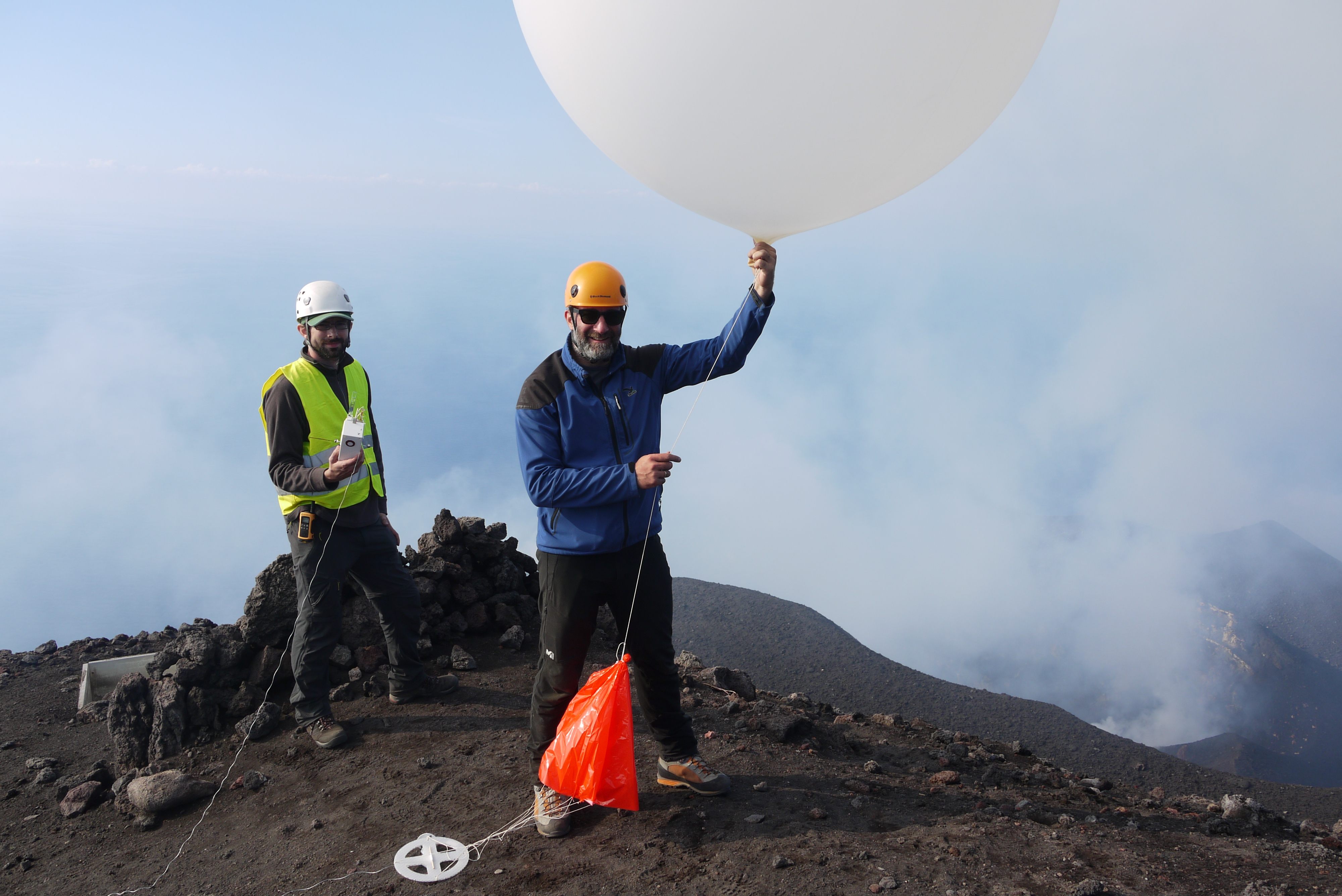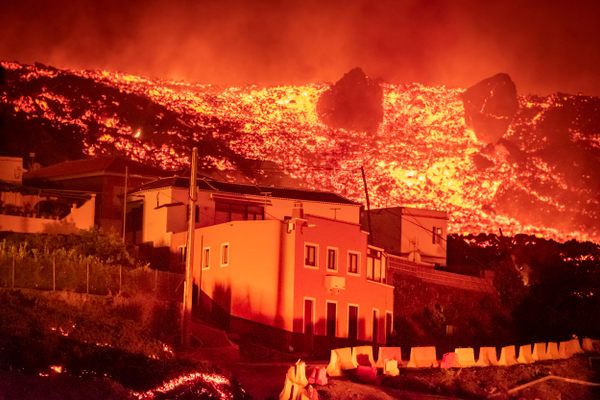This Erupting Italian Peak Is a Hotspot for Studying Volcanic Lightning
Though not much to see, Mount Stromboli is a scientist’s dream.

For certain scientists, Mount Stromboli is the perfect volcano precisely because it is surprisingly milquetoast. Stromboli lacks the more charismatic drama that a volcano evokes—skyscraping plumes of ash, sustained eruptive columns, billowing chutes of lava, all that jazz. Instead, this volcano is mild, with frequent, short-lived gurglings of lava that spew out around every 20 minutes. If a Hawaiian eruption is a sustained scream, a strombolian eruption is unhinged babbling.
A small island off the north coast of Sicily, Stromboli has been erupting continuously for the past 2,000 years. These gentle explosions can be seen from all around the island, granting Stromboli the rather romantic nickname “Lighthouse of the Mediterranean.” It is one of the eight Aeolian Islands, a volcanic archipelago in the Tyrrhenian Sea named after Aeolus, the Greek demigod of the winds. At its summit, Stromboli is a mere 3,031 feet, paling in comparison to some other active volcanoes, such as Hawaii’s Mauna Loa, which reaches 13,679 feet, or Ojos del Salado, which looms in the Andes at an astounding 22,615 feet.
While Stromboli’s modest stature and tiny eruptions offer little grandeur, they make the volcano perfect for scientific study. That’s why Keri Nicoll, a research fellow and meteorologist at the University of Reading, chose Stromboli to study volcanic lightning, the extremely metal phenomenon that occurs when lightning erupts in a volcanic plume. Stromboli’s plumes are “relatively small and benign, which means you can really get quite close to study them without endangering the scientists involved,” Nicoll wrote in an email. Plus, she added, the commute was “only a 900-meter [2,953-foot] climb to work every day”—a nightmare for most but a volcano researcher’s dream. In comparison, dormant Mauna Kea’s 13,796-foot summit is so high that construction crews frequently succumbed to altitude sickness when building the peak’s first observatory.

Volcanic lightning only occurs if the volcanic plume is electrified, which can happen in a number of ways. Scientists have long known that when particles of ash rub up against each other, they create electrical imbalances in a process called triboelectrification. It’s the same thing that causes a balloon to stick to your hair after you rub it on your head. This explanation only applies when the plumes contain ash. Stromboli’s plumes don’t contain any ash, just gas, so they don’t produce visible lightning. Yet they’re still electrified, research has shown, so some other mechanism but be working in these gaseous emanations.
To solve the mystery of Stromboli’s phantom charge, Nicolls and her collaborator, Corrado Cimarelli from Ludwig Maximilian University of Munich, had to measure the charge of the volcano’s ash-free clouds. After lofting balloons carrying electricity-measuring instruments over the volcano, they discovered that another, previously unrecognized mechanism gives these plumes an extra electrical boost. Stromboli’s secret? Radon, the invisible, odorless radioactive gas of basement detector fame. When radon decays, it emits charged “daughter” elements that, in turn, decay and produce their own charged particles. With eruptions happening every 20 minutes, these charges build up over time to create a pretty electrified plume. The researchers’ results were published last week in Geophysical Research Letters, and their work was funded by the National Geographic Society.
Nicolls is actually glad that Stromboli doesn’t even produce its own volcanic lightning; that dearth of excitement makes it such an ideal testing zone. “Had the plumes been more complex and contained ash,” she says, “There would be many more dominant charging mechanisms in operation and their effects would likely have swamped any other mechanisms, such as radon, which might be active.” So give it up for Stromboli, one of the world’s least visually spectacular and most scientifically cooperative active volcanoes.






















Follow us on Twitter to get the latest on the world's hidden wonders.
Like us on Facebook to get the latest on the world's hidden wonders.
Follow us on Twitter Like us on Facebook